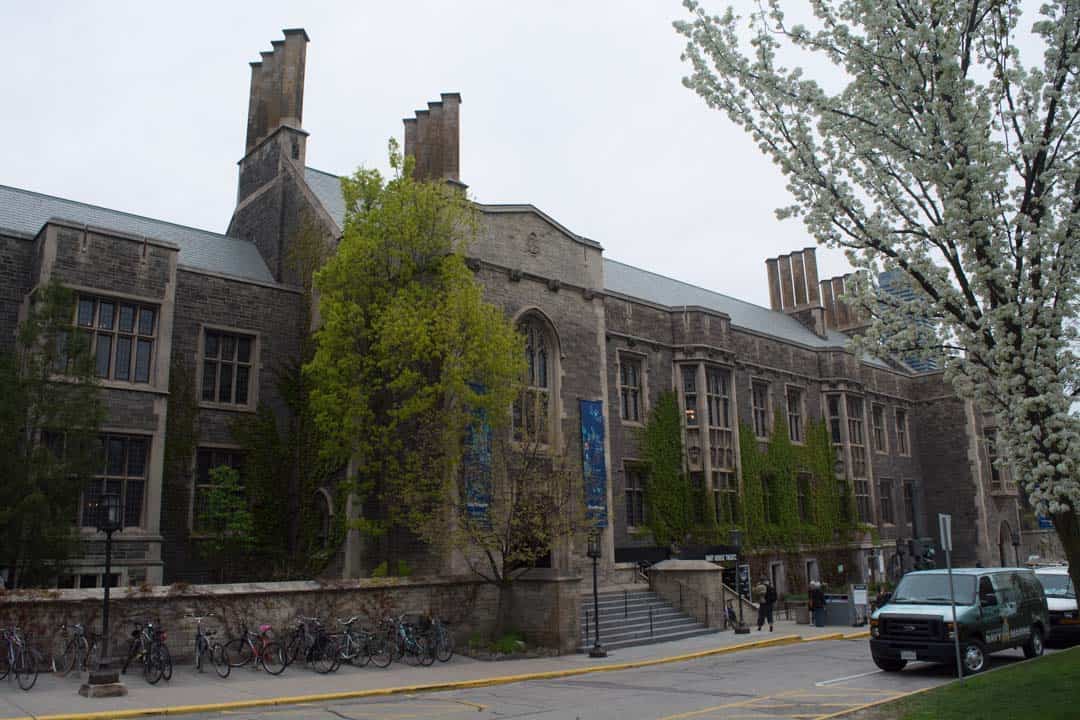Content warning: Anti-Indigenous racism
A poster promoting an Indigenous art exhibition at Hart House was defaced with a racial slur over the weekend of April 29-30.
The exhibit, titled Words to Form, featured an architectural model by James Bird, a member of the Northwest Territories Métis Nation and graduate of U of T’s Indigenous Studies program. The poster was vandalized with the words “drunken Indian” scrawled across the artist’s photo.
According to Althea Blackburn-Evans, Director of Media Relations at U of T, Campus Police were notified of the vandalism by a Hart House building supervisor on the morning of April 30. From there, Campus Police turned over the investigation to the Toronto Police Service. Speaking to The Varsity on May 3, Blackburn-Evans confirmed that there were no leads on the investigation.
“It’s disgusting that that’s happening on our campus, and it can’t be tolerated,” said Architecture and Visual Studies Student Union President Marienka Bishop-Kovac. In the wake of the incident, Bishop-Kovac called for more “education and awareness” of Indigenous issues on campus.
The Indigenous Studies Students’ Union (ISSU) released a statement on their Facebook page following the incident, writing that, “although the University of Toronto prides itself as being an institution of boundless potential and fruitful discovery, its walls are not free from unbridled ignorance.”
Jonathan Hamilton-Diabo, the university’s newly-appointed Director of Indigenous Initiatives, said that, to his knowledge, vandalism like this had not occurred before at Hart House exhibits that focused on Indigenous subject matter.
The vandalism also brings into question the state of security at the student activity centre. Hart House does not use CCTV security cameras, but rather employs building supervisors who maintain a day and night patrol of the building.
“[Hart House] really want[s] people to feel like it’s a very welcome, open space where people can come in and feel really excited to be there,” said Blackburn-Evans. “They don’t want people to feel like they’re under surveillance when they’re there.”
Despite this, Bishop-Kovac thinks that “Hart House could have taken better precautions so that this didn’t happen,” but credits Hart House staff with being helpful regarding the treatment of the situation.
Cheryl Regehr, Vice-President and Provost at U of T, defended Hart House’s security protocols: “What we want is the University of Toronto to be a place where people feel comfortable moving about, where we trust members of our community.”
Hamilton-Diabo noted that this incident will help them take into account “potential positives and negatives” for art spaces in the future. “We’d never had an incident, and unfortunately we’ve had something now, and I think it just helps with thinking ahead.”
“This is the lived experience of some members of our community, and we need to continue to be vigilant and to speak out when we witness it happening,” said Regher.


